I’ve got a soft spot for Silver Needle tea because it was one of my first tea crushes.
But let me be real with you – it played hard to get at first.
This tea is like a showstopper, catching your eye with those plump, soft white buds that feel as fluffy as a bunny’s fur.
But hold up, it’s got a price tag that can make your wallet wince. Seriously, why’s it gotta be so pricey?
I want you to be in the know, armed with more intel than I had when I fell head over heels for Silver Needle (and boy, did it give me a run for my money).
Before we go any further, just know that while Silver Needle might get a little more attention than it bargains for.
There’s a reason behind the hype, and you’re gonna see why once you get acquainted with it.
What Is Silver Needle Tea? – Bai Hao Yin Zhen
Silver Needle white tea (Bai Hao Yin Zhen) is a delicate and high-quality type of tea made from young tea buds.
These buds are plucked from the tea plant before they fully unfurl.
The tea gets its name from the silvery-white hairs on the buds which give them a unique appearance.
When you brew Silver Needle tea, you’ll notice its pale color and subtle flavor.
It has a light and sweet taste with floral notes that dance on your palate.
This tea is famous for its gentle and soothing qualities. Thus, making it a delightful choice for a calm and refreshing sip.
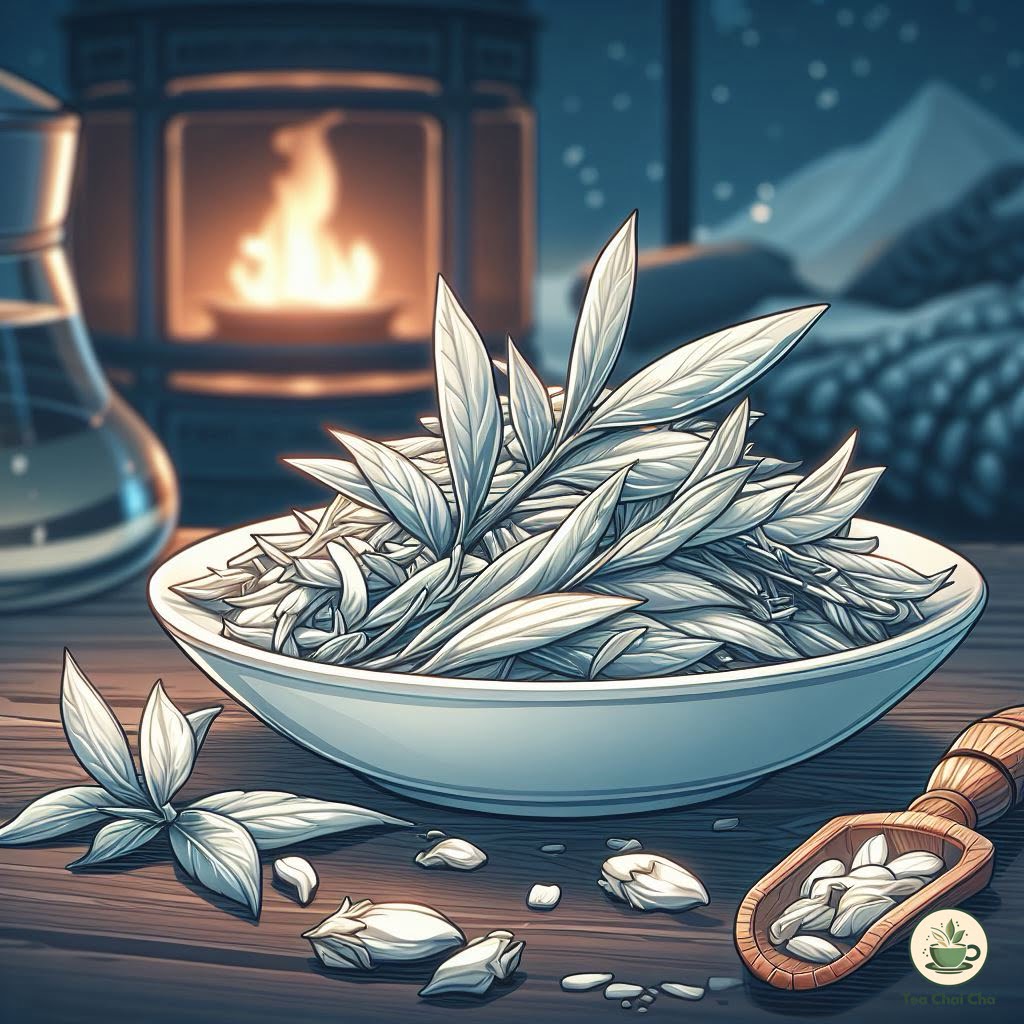
Why Does Silver Needle Tea Stand Out?
Silver Needle tea stands out among China’s white teas as the “highest grade.” What makes it special?
Unlike most teas that use both leaves and buds, Silver Needle is crafted solely from the tender buds of the tea plant.
These buds, often referred to as tips or needles, are the youngest and most valuable part of the plant, brimming with goodness.
However, plucking these tiny buds is no small feat; it’s a meticulous and time-consuming process.
Imagine needing thousands upon thousands of these buds to create a single kilogram of Silver Needle tea.
This exclusivity and the extra effort required contribute to its higher cost and relatively lower availability compared to other white teas.
Now, here’s where things get fascinating.
Since the buds are the tea plant’s precious beginnings before they grow into larger leaves, the plant invests significant effort into producing and safeguarding them from the cold, stress, and pests.
Consequently, these buds are rich in the most desirable components of tea: caffeine, theanine, and polyphenols.
In simple terms, a top-quality Silver Needle tea should be bursting with life, brimming with vibrant energy, and a explosion of flavor.
It’s like the tea plant’s way of saying, “Here’s the best I’ve got!”
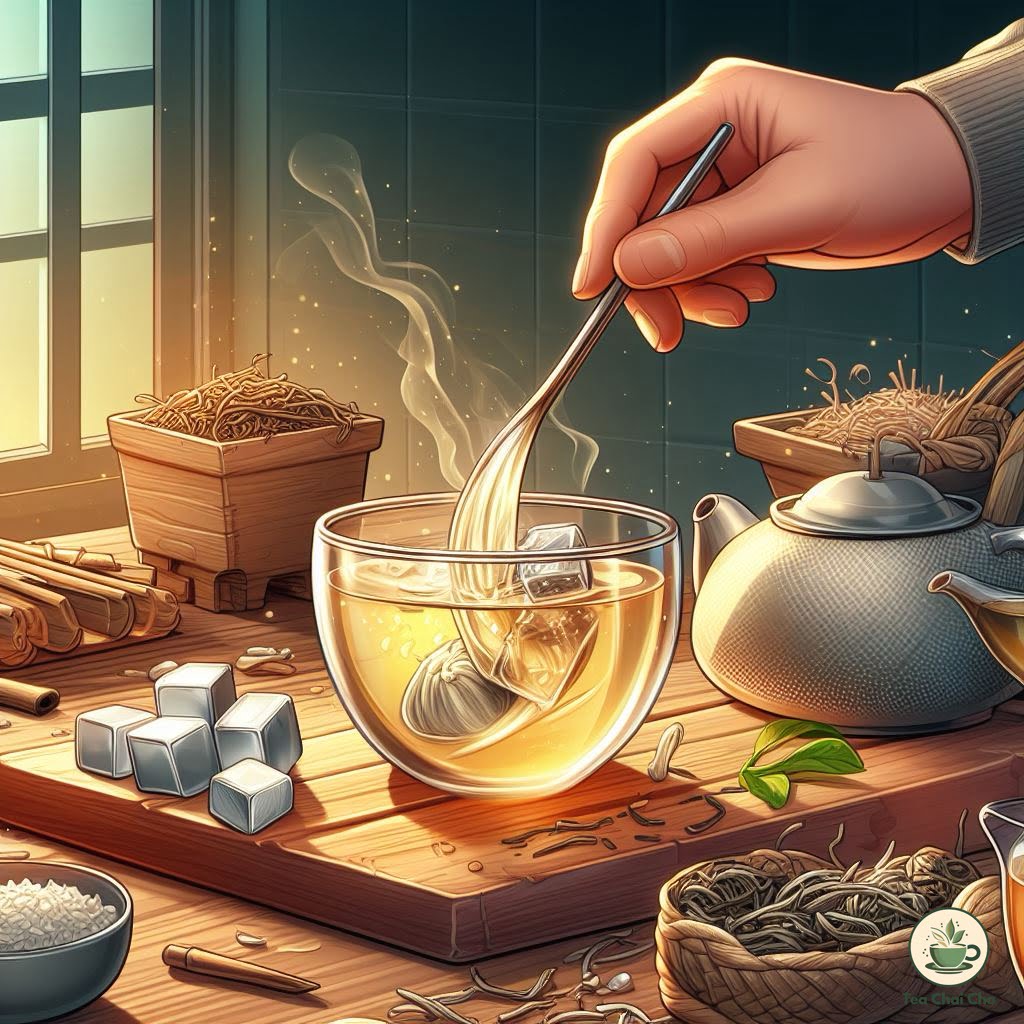
What You Need to Brew Silver Needle Tea
Making Silver Needle Tea is all about simplicity and elegance.
The right ingredients and equipment, along with a little patience, can reward you with a delightful and refreshing cup of tea.
So, here’s what you need to get started:
Ingredients for Silver Needle Tea
- Silver Needle Tea Leaves
Start with the star of the show – Silver Needle tea leaves.
These delicate, silvery-white tea buds are the heart of this exquisite tea.
You need high-quality, fresh Silver Needle tea leaves for the best flavor.
- Fresh Water
Use clean, fresh water to brew your Silver Needle tea. Water quality matters, so opt for filtered or bottled water if possible.
Avoid using water that has been sitting for too long or has a strong taste.
Equipment for Silver Needle Tea
- Teapot or Teacup
Choose a glass teapot or teacup that suits your brewing style.
Tea lovers in China love to brew their Silver Needle in a glass teapot or teacup.
A teapot with a built-in infuser is ideal for allowing the tea leaves to unfurl fully.
If you prefer a simpler approach, a teacup with an infuser or a strainer will work just fine.
- Infuser or Strainer
If your chosen teapot or teacup doesn’t have a built-in infuser, make sure to have a separate infuser or strainer on hand.
This will help you separate the tea leaves from the liquid when you’re ready to enjoy your tea.
- Water Kettle
A water kettle with temperature control is a valuable tool for brewing Silver Needle tea.
The delicate tea leaves require water at around 175°F (80°C) to 185°F (85°C) for optimal flavor extraction.
- Timer
To ensure a perfect brew, use a timer to keep track of the steeping time.
Silver Needle tea usually requires a shorter steeping time of around 2 to 3 minutes to avoid bitterness.
- Tea Cups or Mugs
Choose your favorite tea cups or mugs to enjoy the final product.
Opt for cups that are comfortable to hold and have a wide opening to fully appreciate the aroma.
- Optional Additions
Feel free to personalize your Silver Needle tea experience with optional additions such as honey, lemon, or a dash of milk.
These additions can complement the tea’s natural flavors and enhance your enjoyment.

How to Make Silver Needle Tea
Silver Needle is a white tea and white teas demand careful brewing. You can follow this guide if you want to brew Silver Needle Tea properly.
Step 1: Choosing Quality Silver Needle Tea Leaves
When making Silver Needle Tea, start by selecting high-quality tea leaves.
Look for leaves that are young and covered in fine white hairs, indicating freshness.
Choose loose leaf tea rather than tea bags for the best flavor and aroma.
Step 2: Measuring Silver Needle Tea Leaves
Measure about 1 to 1.5 teaspoons of Silver Needle Tea leaves per cup of water.
Adjust the amount based on your taste preferences, but remember that using too much tea can result in a bitter taste.
Step 3: Heating Water to the Right Temperature
Boil water and let it cool slightly.
The ideal temperature for Silver Needle Tea is around 175°F (80°C).
If you don’t have a thermometer, you can let the water cool for about 2-3 minutes after boiling.
While the water is heating, make sure to preheat your teapot if you are using one.
Pour in some hot water, give a nice swirl, and discard.
It gives a constant temperature to tea leaves to work their magic.
Step 4: Steeping Silver Needle Tea
Place the tea leaves in a preheated teapot or teacup. Pour the hot water over the tea leaves.
Let the tea steep for 3 to 5 minutes.
This allows the delicate flavors to infuse into the water.
Adjust the steeping time based on your preference; a shorter steeping time will result in a lighter flavor, while a longer steeping time will yield a stronger taste.
Step 5: Enjoying the Tea
After steeping, carefully strain the tea leaves or remove the infuser. Now, your Silver Needle Tea is ready to be enjoyed.
Take small sips and savor the subtle floral and sweet notes of the tea.
You can drink it plain or add a touch of honey or a slice of lemon if you prefer.
Silver Needle Tea Hot or Cold?
If you enjoy a light and delicate taste, you might want to try it hot.
When you sip it warm, you’ll feel the subtle flavors gently dance on your taste buds. It’s a cozy choice, perfect for a quiet moment.
On the other hand, if you’re feeling a bit more refreshing, go for cold Silver Needle tea.
When chilled, it becomes a crisp and invigorating option. It’s like a cool breeze on a sunny day.
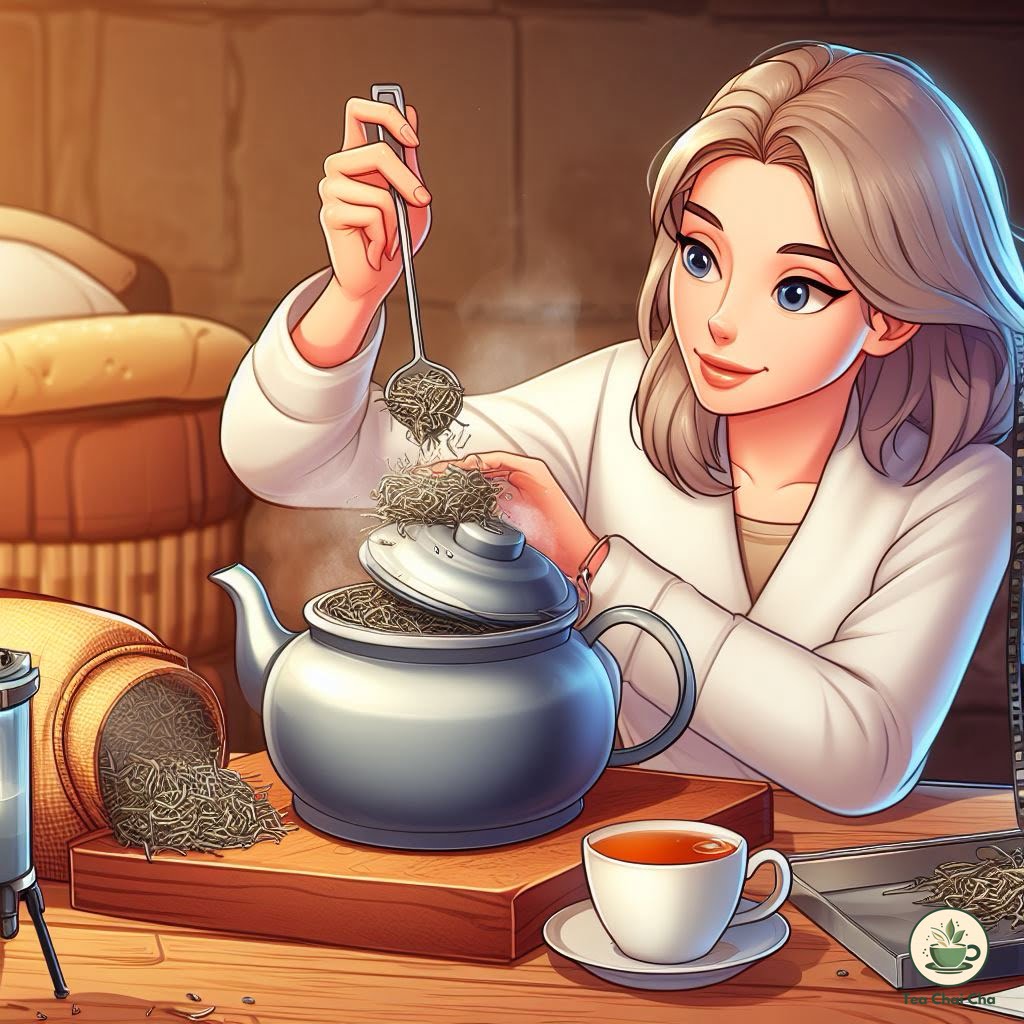
Brewing Guide for Hot and Iced Silver Needle White Tea
| Aspect | Hot Silver Needle Tea | Iced Silver Needle Tea |
| Water Temperature | Around 175°-200°F (80°-93°C) | Cold Water |
| Brewing Method | Boiling water + steeping | Cold water + steeping |
| Steeping Time | 3-5 minutes | 6-8 hours or overnight |
| Flavor Profile | Bright, crisp, delicate | Smooth, mellow, refreshing |
| Preparation Speed | Faster | Slower |
| Bitterness | Potential for bitterness | Less bitterness due to cold brew |
| Customization | Add flavors afterward | Can include flavors during steeping |
| Ideal for | Quick enjoyment, traditional taste | Gradual infusion, smoother taste |
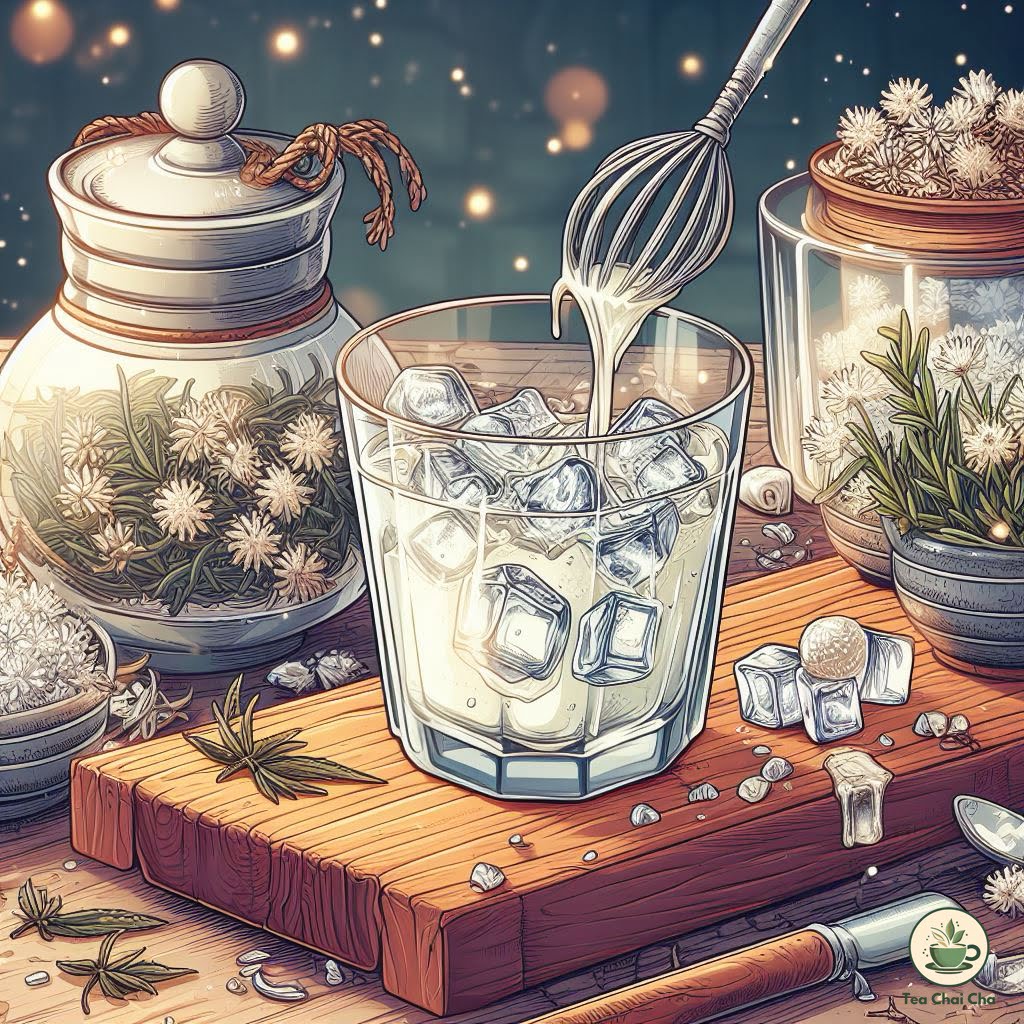
How to Make Silver Needle Iced Tea
Let’s make Silver Needle iced tea using both the traditional method and the cold brew method. Here’s how you can do it:
Traditional Silver Needle Iced Tea Recipe
Ingredients:
- 2 tablespoons of Silver Needle white tea leaves
- 4 cups of water
- Ice cubes
- Optional: Sweetener (like honey or sugar), lemon slices, mint leaves
Steps:
Boil Water: Bring 4 cups of water to a boil. Let it cool down for a minute after boiling.
Steep the Tea: Place 2 tablespoons of Silver Needle white tea leaves in a teapot or heatproof pitcher. Pour the hot water over the tea leaves.
Steeping Time: Let the tea steep for about 3-5 minutes. This allows the delicate flavors to infuse into the water. Adjust the steeping time to your preference – shorter for a lighter taste, longer for a stronger taste.
Chill the Tea: Remove the tea leaves from the water. You can strain the tea if you prefer. Let the tea cool down to room temperature.
Serve Over Ice: Fill glasses with ice cubes. Pour the cooled Silver Needle tea over the ice.
Add Flavors (Optional): If you like, add a squeeze of lemon, a sprig of mint, or a touch of sweetener to your taste.
Cold Brew Silver Needle Iced Tea
Ingredients:
- 2 tablespoons of Silver Needle white tea leaves
- 4 cups of cold water
- Ice cubes
- Optional: Sweetener, lemon slices, mint leaves
Steps:
Combine Tea and Water: In a pitcher, combine 2 tablespoons of Silver Needle tea leaves with 4 cups of cold water.
Refrigerate: Cover the pitcher and place it in the refrigerator. Allow the tea to steep in the cold water for about 6-8 hours or overnight.
Strain and Serve: After steeping, strain the tea to remove the leaves. You can strain directly into glasses filled with ice cubes.
Flavor and Enjoy: Customize your iced tea by adding sweetener, lemon slices, or mint leaves according to your preference.

Brewing Guide for Iced and Cold Brew Silver Needle White Tea
| Aspect | Traditional Method | Cold Brew Method |
| Brewing Temperature | Boiling water (200°F or 93°C) | Cold water |
| Tea Steeping Time | 3-5 minutes | 6-8 hours or overnight |
| Flavor Profile | Quick infusion, slightly bold | Smooth, less bitter |
| Convenience | Faster process | Requires advanced planning |
| Iced Tea Texture | Lighter | Full-bodied |
| Additions (Optional) | Lemon, sweetener, mint | Lemon, sweetener, mint |
Types of Silver Needle Tea to Try
Today, many places make “Silver Needle” teas – basically, any white tea made from just buds gets called Silver Needle.
But let’s talk about the original: Chinese Silver Needle. There are two main types you’ll often see:
First, there’s the sweet and polished Fujian Silver Needle. It’s from Fujian Province in the southeast.
Then, there’s the wilder Yunnan Silver Needle. It’s like the spirited cousin, from Yunnan Province in the southwest.
They taste really different, so pay attention. You might want to try both – they’re worth it!
| Aspect | Fujian Silver Needle | Yunnan Silver Needle |
| Flavor | Gentle, floral | Potent, some bitterness |
| Brew Sensitivity | More forgiving | Slightly sensitive |
| Appearance | Pale, light buds | Yellowish with dark undertones |
| Climate | Cooler | Hotter |
| Variation | Generally consistent | More variation due to diverse genetics and local influences |
| Quality Check | Watch for broken buds | Look out for excessive oxidation and inconsistent buds |
Fujian Silver Needle Tea
Fujian Silver Needle style stands out as the most classic and authentic Silver Needle tea.
It brings a balanced and graceful taste, often reminding me of hay, apricot, vanilla, and gentle florals.
The tea feels softer and more composed compared to Yunnan Silver Needle.
Fujian Province has a rich tea history, being the birthplace of white tea, with Silver Needle production dating back to the early 1800s.
This long tradition has led to deep expertise among local tea makers, making it easy to learn from experienced neighbors, cousins, and friends.
This history also set a standard for Silver Needle tea, using a specific type of tea plant with thick, downy buds.
This consistency gives Fujian Silver Needle a uniform appearance with small, dense buds and a silvery, pale green hue.
The best ones I’ve tasted are incredibly sweet and almost creamy.
Within Fujian’s extensive Silver Needle legacy, two distinct variations have emerged: Fuding and Zhenghe.
These areas, though part of the same province, have unique climates and local practices that influence their Silver Needle production.
Fuding Silver Needle vs. Zhenghe Silver Needle
| Aspect | Fuding Silver Needle | Zhenghe Silver Needle |
| Flavor Profile | Light, sweet, fruity | Deep, herbal, savory, smoky |
| Leaf Appearance | Plump, bright buds | Thinner, dark olive-green |
| Oxidation Level | Less oxidized | More oxidized |
| Terroir | Misty high mountains | Roasted oolong influence |
| Overall Character | Fresh, creamy, high notes | Rich, weighty, deeper flavors |
Fuding’s Silver Needle is pretty popular and you’ll find it easily. It’s light, sweet, and fruity, kinda like creamy oats. People usually love this one.
Zhenghe Silver Needle isn’t as famous, but it’s interesting.
It’s deeper, more herbal, and a bit savory, maybe even a hint of smoke. If you want something with more weight, try this one.
The leaves are different too. Both regions use the same tea plant, but they have their own versions.
Zhenghe’s needles are thinner and darker, which means more oxidation and richer flavors.
I’ve noticed that Zhenghe’s Silver Needle can have a smoky vibe, maybe because of its closeness to Wuyishan and its roasted oolongs.
On the other hand, Fuding’s needles are plumper and brighter.
They love showing off their misty high mountains, which make their teas fresh and elegant, like Taiwan’s high mountain oolongs.
Fuding’s white teas are less oxidized, so they’re creamy and fresh.
In the big picture, Fujian is like the boss of Silver Needle tea.
It’s a good way to start understanding what Silver Needle is all about.
The history of Bai Hao Yin Zhen, the name for Silver Needle, in Fujian is impressive.
So, if you’re curious, Fuding and Zhenghe are two different worlds of flavor waiting for you to explore.
Yunnan Silver Needle Tea
When you think of Yunnan Province, you might picture pu’erh tea and a warm, diverse landscape.
The tea trees there, called da ye zhong or “big leaf type,” are larger and more potent than other tea trees in China.
Especially the Camellia sinensis assamica variety.
These big leaf tea trees produce a unique Silver Needle tea – bold and surprisingly fragrant.
Unlike the delicate white teas you might be used to, Yunnan Silver Needles pack a punch with strong flavors.
Imagine experiencing fragrant wood, malt, florals, summer fruit, and even a hint of pepper.
The tea buds themselves are a sight to behold – big, fluffy, and aromatic, almost like cuddly puppies you can drink.
Yunnan Silver Needle tea has strong flavors, but it can sometimes taste a bit bitter.
So, when brewing it, you need to be a little more careful. You’ll notice it by looking for big buds with a yellowish tint and dark undertones.
The hot climate in Yunnan causes the buds to oxidize more, making the leaves darker.
It’s important to know that Yunnan Silver Needle can vary a lot.
Yunnan is a huge place with many different types of tea plants and local groups making their own versions of tea.
It’s exciting, but it also means the taste can be a bit unpredictable.
The quality of the tea can be really different depending on where it’s from and who made it.
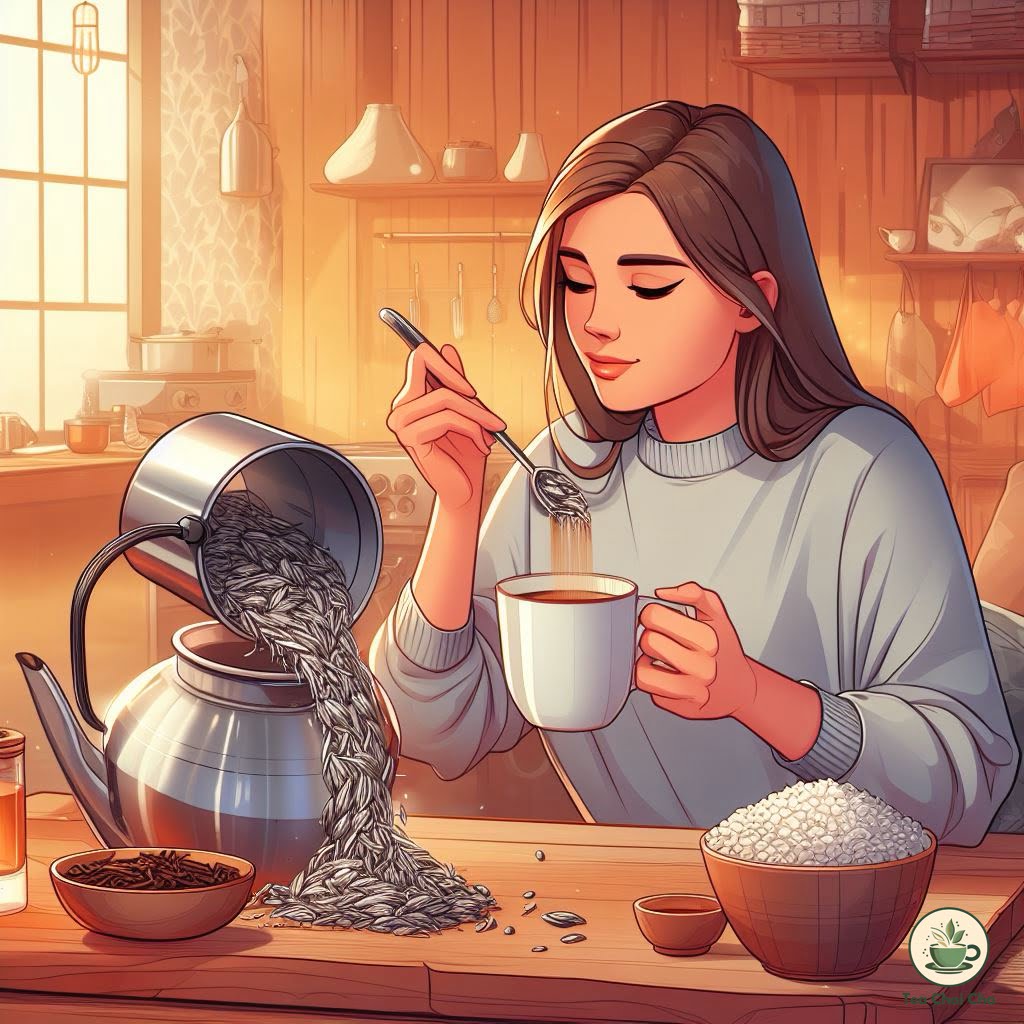
Factors that Affect The Taste of Silver Needle Tea
While Silver Needle tea tastes almost creamy, there are many factors that can have a huge impact on its flavor profile.
Here are some of them:
- Tea Plant Varietal
The type of tea plant used to make Silver Needle tea plays a big role in its flavor.
Different plants have unique flavors. Silver Needle is usually made from the Da Bai cultivar, known for its delicate taste.
- Plucking Standard
When the tea leaves are plucked affects the flavor. Silver Needle is made from the young, tender buds covered in fine white hairs.
Buds plucked early in the spring tend to have a sweeter and milder flavor.
- Growing Conditions
Where the tea plants grow matters. Factors like soil type, altitude, and climate influence the flavor.
Tea plants in higher altitudes might produce a more complex and nuanced taste.
- Processing Method
How the tea leaves are processed after plucking greatly impacts the flavor.
Silver Needle tea goes through minimal processing, with a gentle withering and drying process, which preserves its natural sweetness.
- Oxidation Level
Silver Needle tea is usually minimally oxidized, giving it a light and fresh flavor.
Unlike darker teas, oxidation is kept low to maintain its delicate taste.
- Brewing Technique
Your brewing method matters. Water temperature, steeping time, and tea-to-water ratio affect flavor.
Using cooler water and shorter steeping times can highlight the tea’s subtle sweetness.
- Storage Conditions
After purchasing, how you store your tea affects its flavor. Keep it away from strong odors and moisture.
Airtight containers in a cool, dry place help maintain its taste.
- Age of the Tea
Silver Needle tea doesn’t age as drastically as some other teas, but it can develop slightly different flavors over time.
Fresh Silver Needle usually has a more pronounced sweetness, while older ones might have deeper notes.
- Water Quality
The water you use to brew your tea matters.
Clean, filtered water is best, as impurities in water can alter the tea’s taste.
- Personal Sensitivity
Lastly, everyone’s taste buds are unique.
Your own sensitivity to flavors influences how you perceive Silver Needle tea.
Some might notice floral hints, while others might pick up on fruity notes.
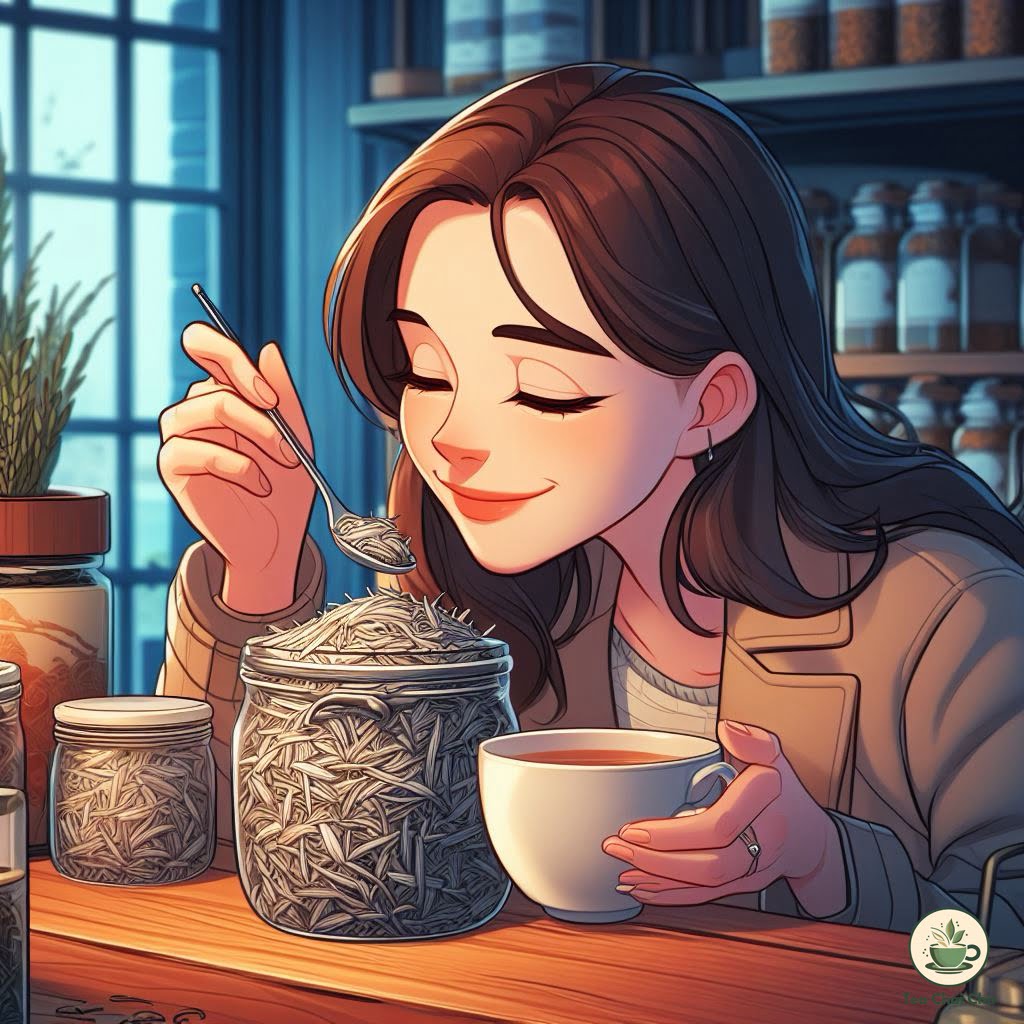
10 Tips for Choosing The Best Silver Needle Tea
Silver Needle tea is one of the most revered tea in China and also the most pricey one.
So, when you are buying Silver Needle white tea, you need to be sure of its premium quality.
Look for these benchmarks to know if Silver Needle tea is worth the price.
- Appearance Matters
Look for Silver Needle Tea leaves that are light in color and covered in fine white hairs.
These hairs are a sign of high-quality tea and indicate young, tender leaves.
- Aroma Check
Give the tea leaves a gentle sniff.
The aroma should be delicate, fresh, and slightly sweet.
Avoid teas with strong or musty smells.
- Leaf Size
Choose teas with long, slender leaves.
The longer the leaves, the better the quality.
Avoid broken or crushed leaves.
- Origin Insights
Check where the tea comes from.
Authentic Silver Needle Tea comes from Fujian province in China.
Teas from this region tend to have the best flavor and aroma.
- Freshness Factor
Opt for the latest harvest.
Fresher tea will have a more vibrant taste and aroma.
Check for the harvest date on the packaging.
- Whole Leaf Experience
Select whole leaves or unopened buds.
These parts of the tea plant offer a more refined flavor compared to broken leaves.
- Minimal Processing
Look for teas that are minimally processed.
Silver Needle Tea is traditionally made by withering and drying the leaves, preserving their natural qualities.
Lower-grade teas have yellowing and browning due to extreme oxidation, and its better to avoid that.
- Brew Test
If possible, brew a small sample before purchasing.
The brewed tea should have a pale, clear liquor and a delicate, slightly sweet taste.
- Reputable Sources
Buy from trusted and reputable tea sellers.
They are more likely to offer genuine, high-quality Silver Needle Tea.
- Price Point
While quality Silver Needle tea is often a bit more expensive, avoid overly cheap options.
Extremely low prices might indicate lower quality or even counterfeit tea.
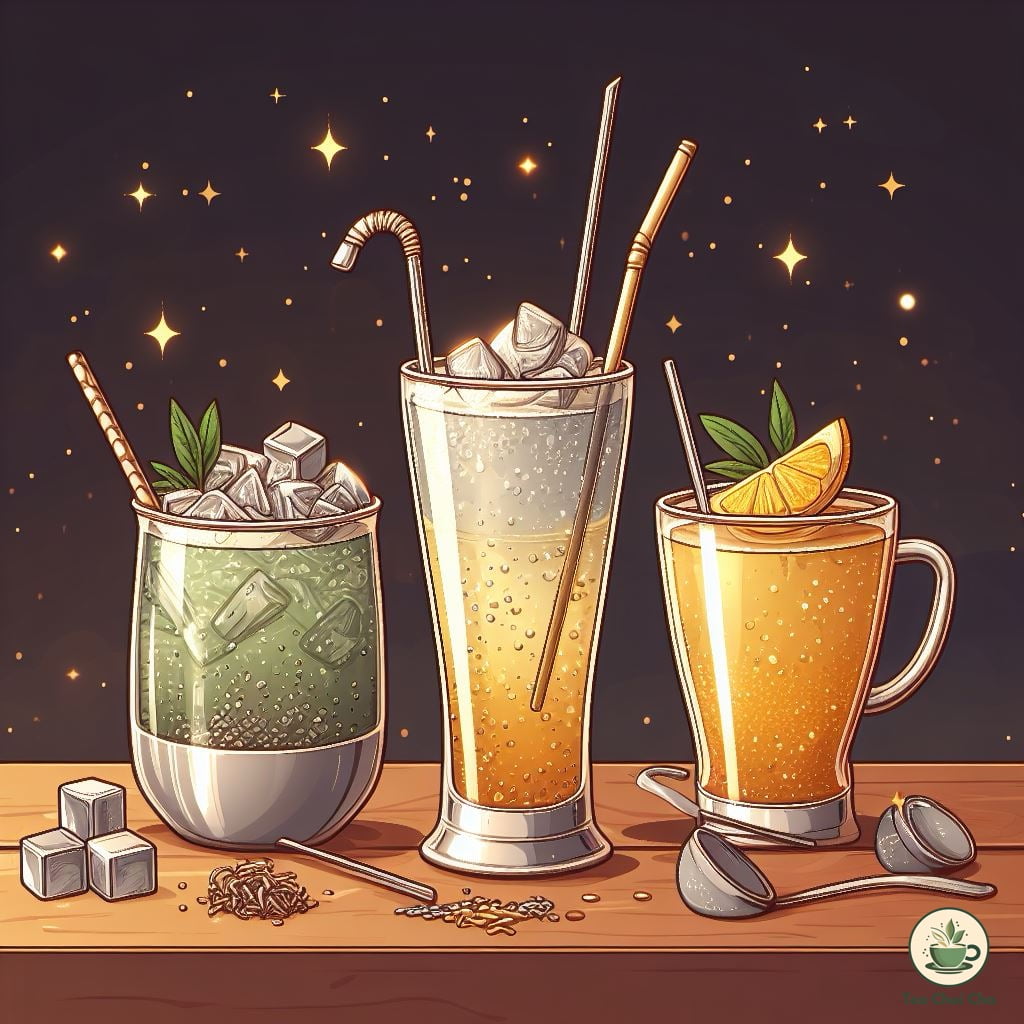
Delicious Drinks with Silver Needle Tea
Silver Needle tea’s delicate flavor makes it a wonderful base for creating refreshing and unique beverages.
Here are some simple yet delightful drinks you can make using Silver Needle tea:
- Silver Needle Lemonade
Mix freshly brewed Silver Needle tea with homemade lemonade.
The tea’s subtle flavors complement the citrusy tang of the lemonade, creating a harmonious blend.
- Silver Needle Tea Spritzer
Combine Silver Needle tea with sparkling water for a fizzy and elegant tea spritzer.
Add a twist of lime or a few berries for extra flavor and visual appeal.
- Silver Needle Tea Mocktail
Create a non-alcoholic cocktail by mixing Silver Needle tea with muddled mint leaves, a dash of simple syrup, and a splash of club soda. Garnish with a mint sprig.
- Silver Needle Tea Smoothie
Blend Silver Needle tea with your favorite fruits (like peaches or strawberries), yogurt, and a touch of honey for a wholesome and flavorful smoothie.
- Silver Needle Herbal Infusion
Create a soothing infusion by combining Silver Needle tea with herbal ingredients like chamomile, lavender, or rose petals.
Let the flavors meld together for a calming drink.
- Silver Needle Fruit Punch
Mix Silver Needle tea with a variety of fruit juices such as pineapple, orange, and cranberry.
Add some diced fruits for extra texture and a burst of flavor.
- Silver Needle Tea Cooler
Infuse Silver Needle tea with cucumber slices and a sprig of mint.
Let it chill in the refrigerator and serve over ice for a cool and revitalizing drink.
- Silver Needle Tea Mock Sangria
Combine Silver Needle tea with a blend of fruit juices (grape, apple, orange) and sliced fruits (apples, berries, oranges).
Let it steep for a while before serving for a mocktail version of sangria.
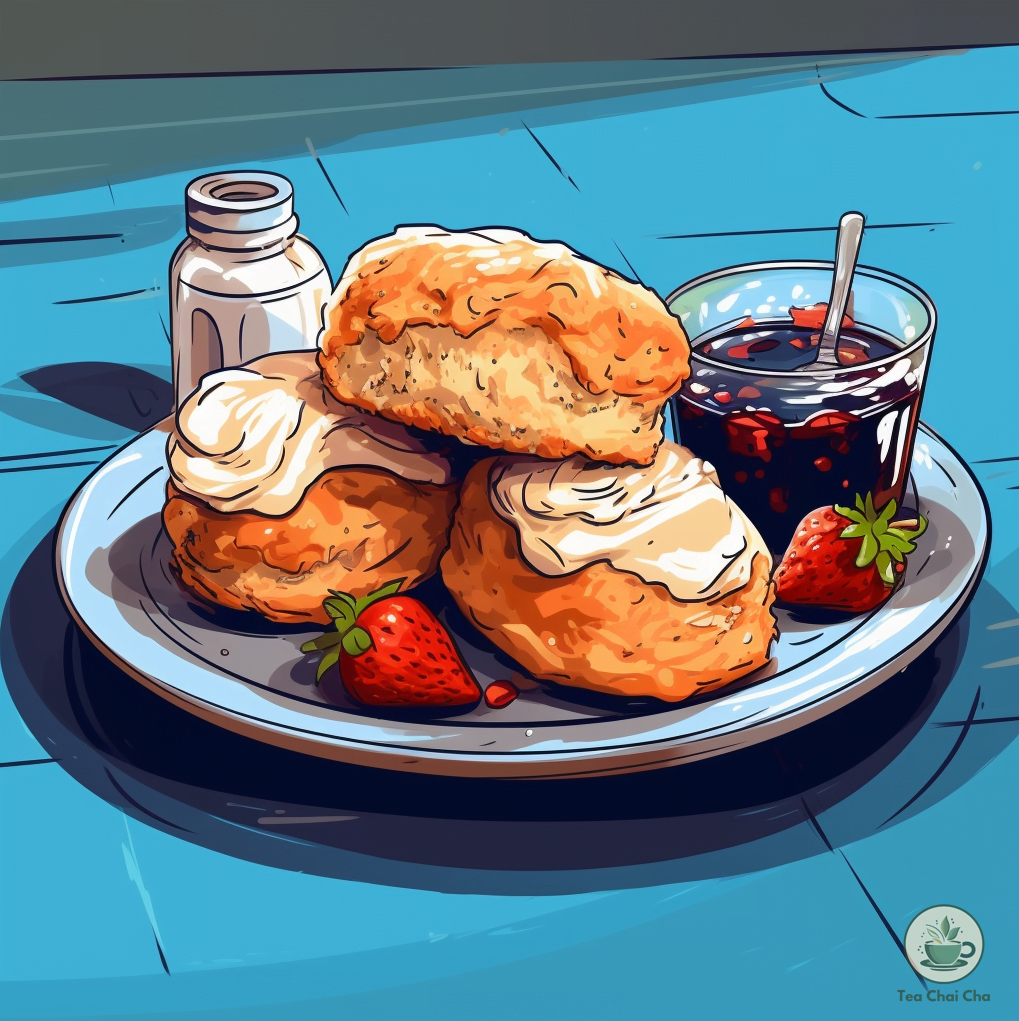
Food Pairing with Silver Needle Tea
Pairing Silver Needle tea with the right foods can enhance your tea-drinking experience.
Here’s how you can enjoy this tea alongside various dishes:
1. Light Pastries and Scones
Pair your Silver Needle tea with light pastries like croissants, madeleines, or scones.
Their buttery and slightly sweet flavors complement the tea’s delicate floral notes.
It creates a harmonious balance on your palate.
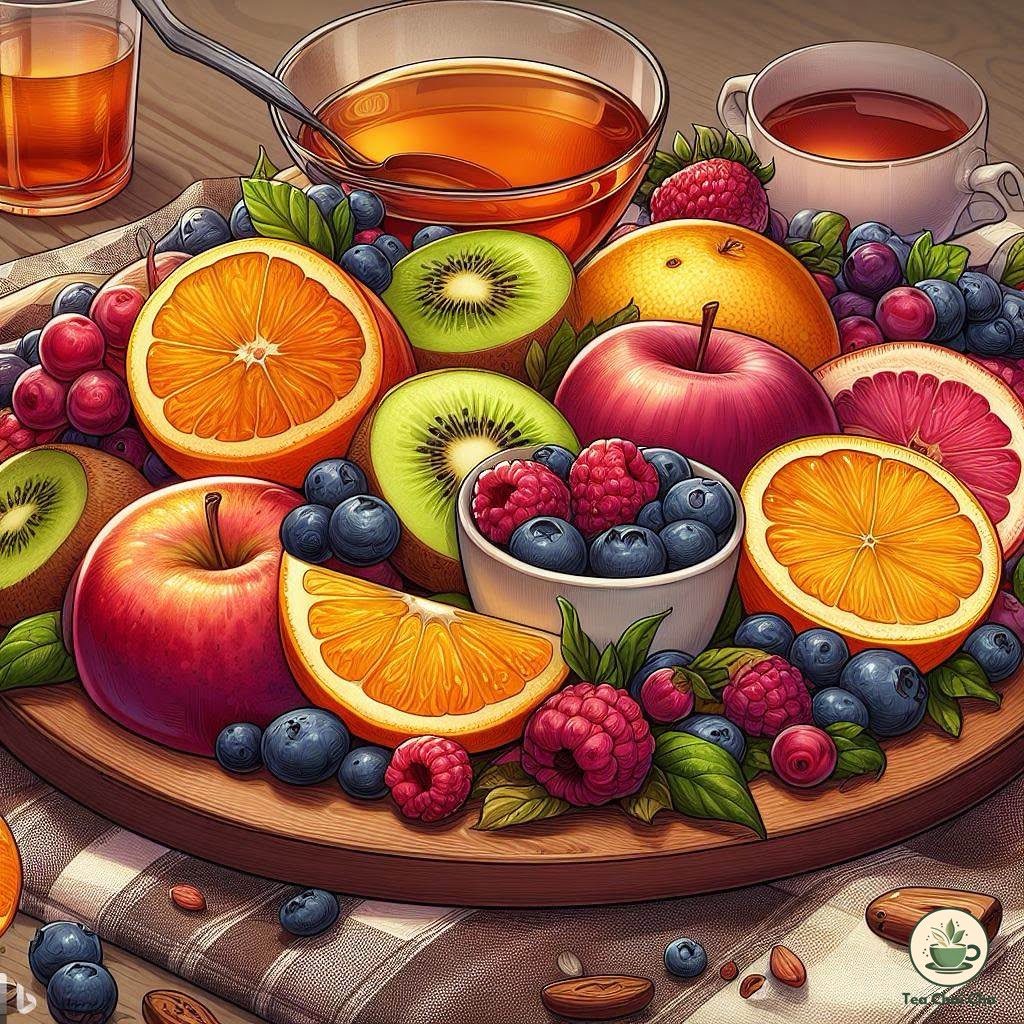
2. Fresh Fruits
Opt for fresh fruits such as peaches, pears, and melons.
The gentle taste of tea can highlight the natural sweetness of the fruits while cleansing your palate between sips.
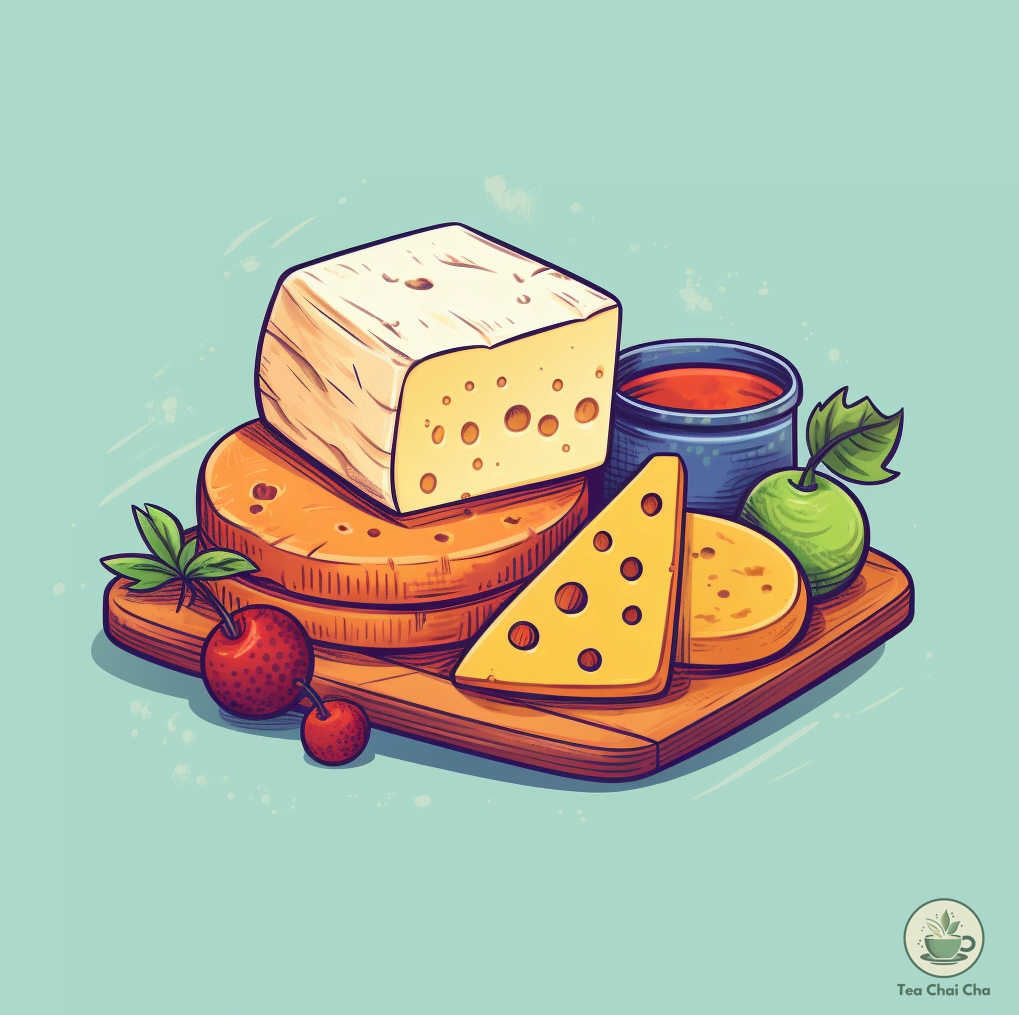
3. Mild Cheeses
Pair your Silver Needle tea with mild cheeses like brie or goat cheese.
The creamy texture of these cheeses complements the tea’s smoothness, and the pairing enhances the tea’s subtle flavors.
4. Poached or Grilled Seafood
Choose poached or grilled seafood like shrimp, scallops, or white fish.
Their light and delicate flavors resonate with the tea, creating a harmonious combination that’s both refreshing and flavorful.
5. Asian Cuisine: How the Chinese Pair Silver Needle Tea
In Chinese culture, Silver Needle tea is often paired with light, subtly flavored dishes to enhance the tea-drinking experience.
Some traditional pairings include:
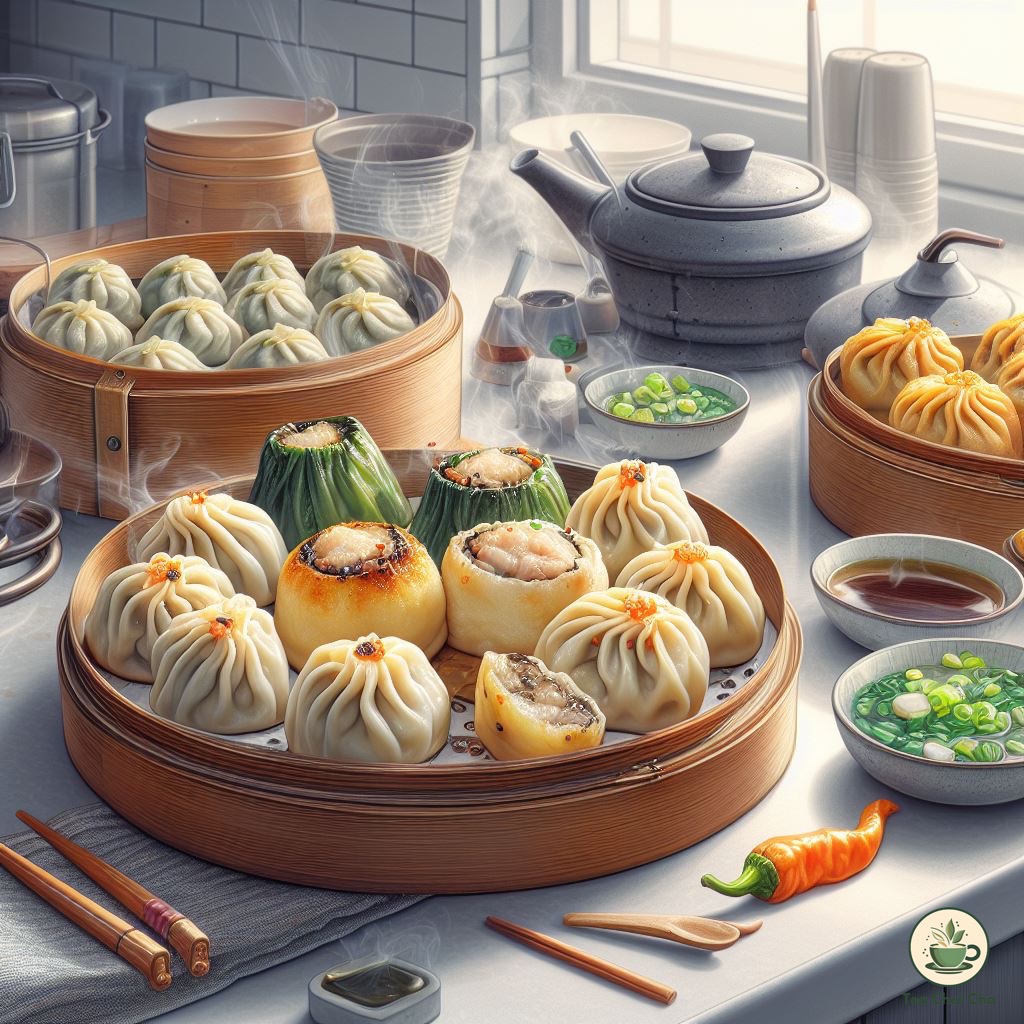
Steamed Dumplings (Dim Sum)
The tea’s mild taste and floral aroma cleanse your palate between bites of flavorful dumplings, creating a balanced and enjoyable contrast.
Steamed Seafood
Chinese cuisine features a variety of steamed seafood dishes that align with Silver Needle tea’s delicate nature.
The tea’s lightness complements the natural flavors of the seafood.
Light Stir-Fries
Opt for stir-fries with tender vegetables and mild protein sources like tofu or chicken.
The tea’s gentle taste can refresh your palate after each bite.
Chilled Noodles
In warmer months, enjoy Silver Needle tea with chilled noodles like sesame noodles or cold rice noodles.
The tea’s cooling effect complements the refreshing nature of these dishes.
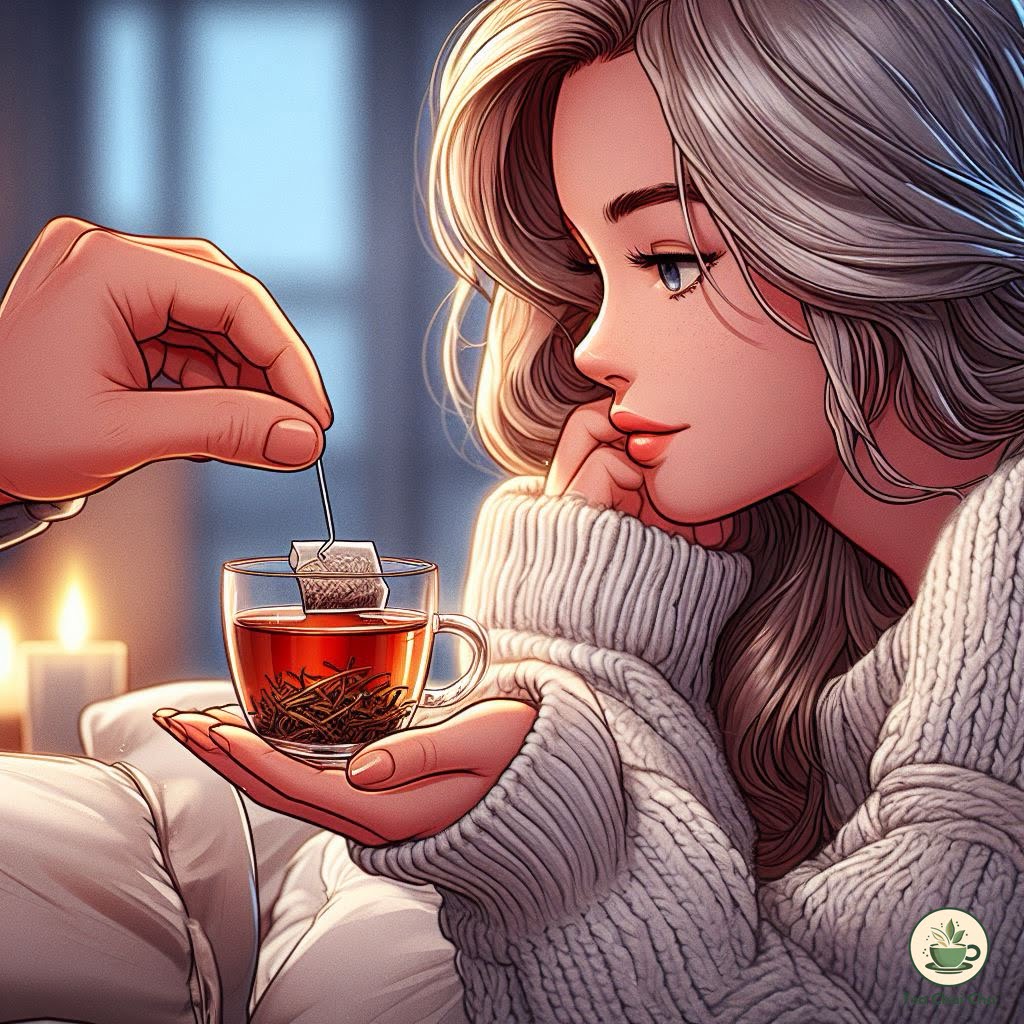
When to Drink Silver Needle Tea
Silver Needle tea is a delicate and light white tea.
It’s best enjoyed in the morning or early afternoon when your taste buds are fresh and awake.
This soothing tea can be a great way to start your day or to have a gentle pick-me-up during the day.
To get the most out of your Silver Needle tea, try not to have it right after a heavy meal, as it might not blend well with strong flavors.
Instead, have it between meals or with light snacks.
Since Silver Needle tea has a subtle and sweet taste, it’s nice to drink it when you can fully appreciate its delicate flavors.
Find a quiet moment, maybe when you’re reading a book, working on a project, or simply relaxing.
Remember, there’s no rush when enjoying Silver Needle tea.
Sip it slowly and let its soothing qualities calm your mind and refresh your senses.
Related

Silver Needle Tea Recipe
Recipe by Tania FaysalCourse: DrinksCuisine: Chinese2
servings2
minutes3
minutes1-2
kcal5
minutesSavor the delicate charm of white tea with our Silver Needle Tea recipe, perfect for 2 tea enthusiasts.
Ingredients
2 teaspoons Silver Needle Tea leaves
2 cups of fresh, filtered water
Directions
- Prepare Your Teapot: Start by warming your teapot. Pour a little hot water into the pot, swirl it around, and then discard it.
- Heat Your Water: In a kettle, heat your water to the perfect Silver Needle Tea temperature, which is 175°F or 80°C. The water should be hot, but not boiling, to preserve the delicate flavor of the tea.
- Add the Tea Leaves: Place 2 teaspoons of Silver Needle Tea leaves into your teapot.
- Steep the Tea: Pour the hot water over the tea leaves. Allow the tea to steep for about 3-5 minutes, depending on your taste preference.
- Serve the Tea: After steeping, gently pour the tea into your cups, leaving the tea leaves in the teapot. Enjoy the aroma and taste of your delicate Silver Needle Tea.
Recipe Video
Frequently Asked Questions (FAQs)
What does Silver Needle tea taste like?
Silver Needle tea has a delicate and light taste. It’s often described as having a subtle sweetness with floral and sometimes slightly fruity notes. It’s a gentle and refreshing flavor.
Does Silver Needle tea have caffeine?
Yes, Silver Needle tea does contain 30 mg caffeine per cup.
The caffeine content is generally lower compared to black or green teas. It’s a good option if you’re looking for a milder caffeine boost.
Is Silver Needle a real tea?
Yes, Silver Needle tea is a real type of tea. It’s a premium white tea made from the young, unopened buds of the tea plant. The buds are covered in fine white hairs which give the tea its unique name.
How many calories in Silver Needle tea?
Silver Needle tea is very low in calories.
A typical cup of Silver Needle tea contains only a few calories, usually less than 5 calories. It’s a great choice if you’re watching your calorie intake.
What is Silver Needle tea good for?
Silver Needle tea has a high level of antioxidants. It may help with boosting immunity, heart health, and digestion. Besides, it has relaxing properties and may promote weight loss.
